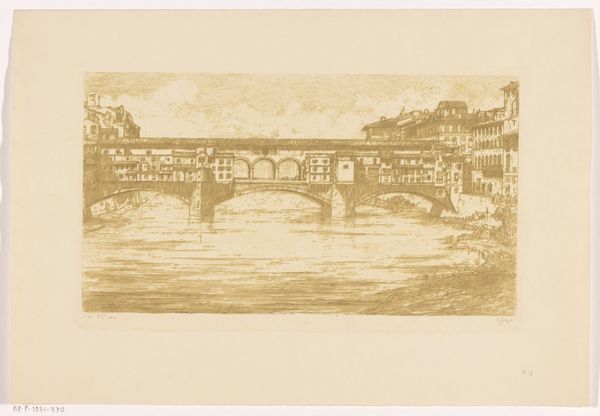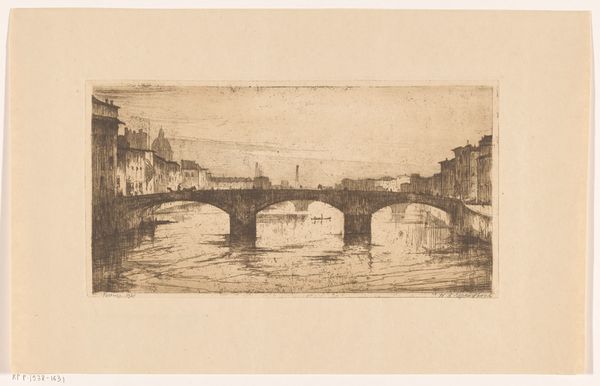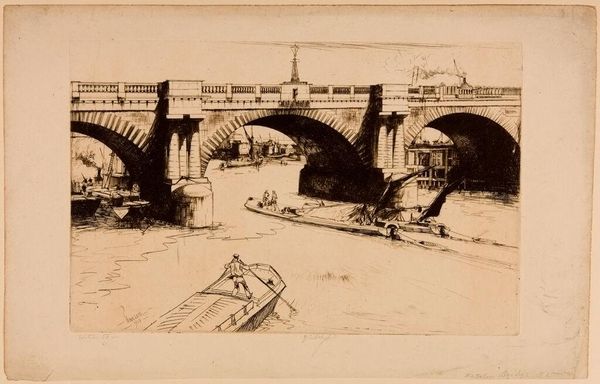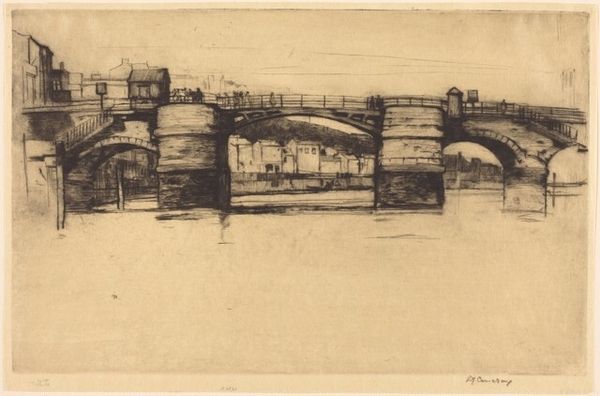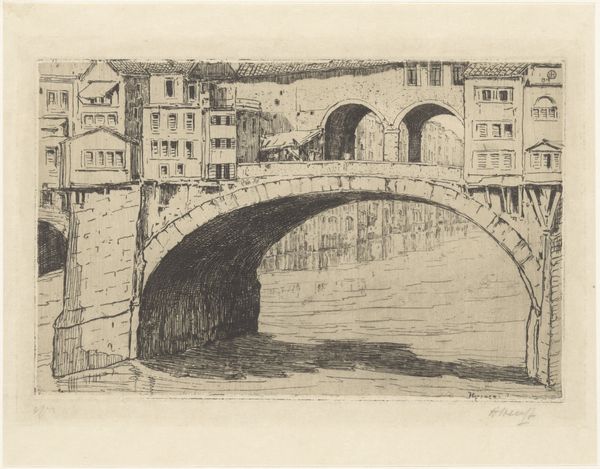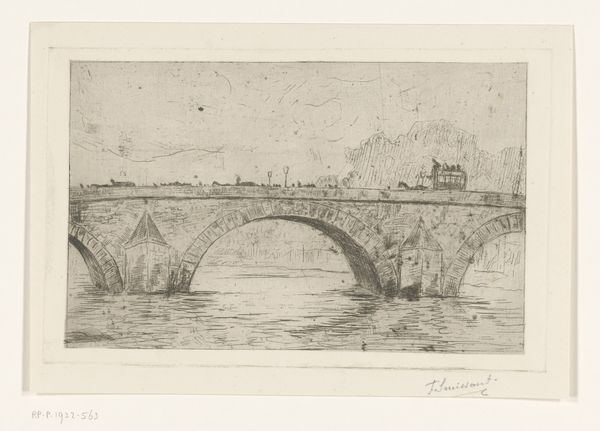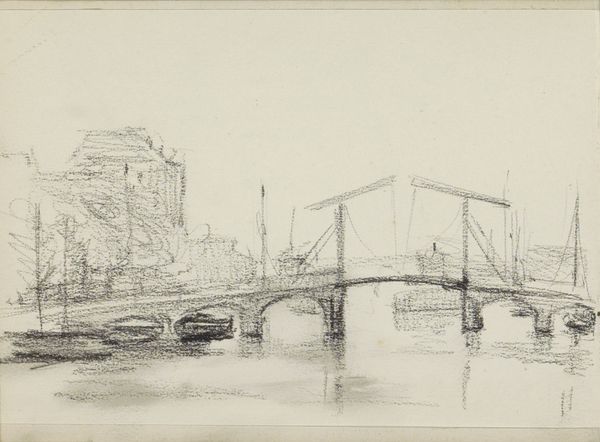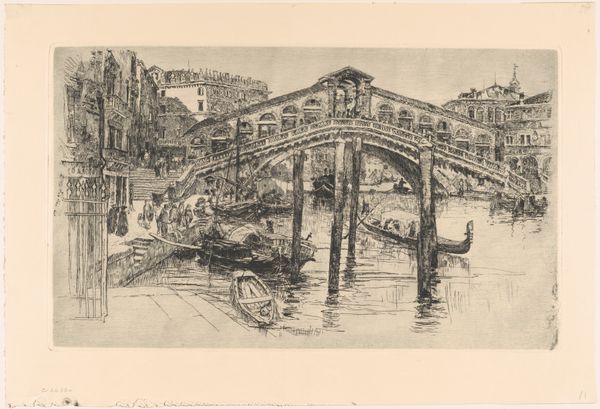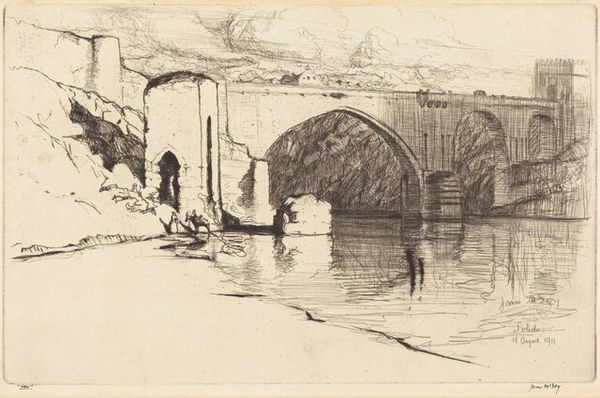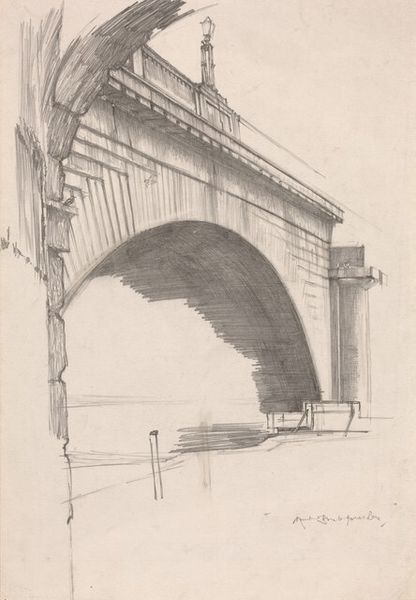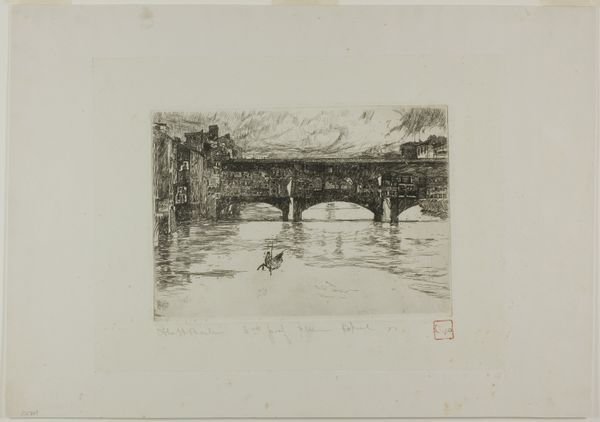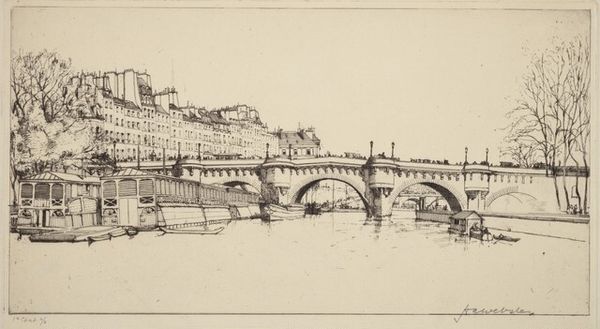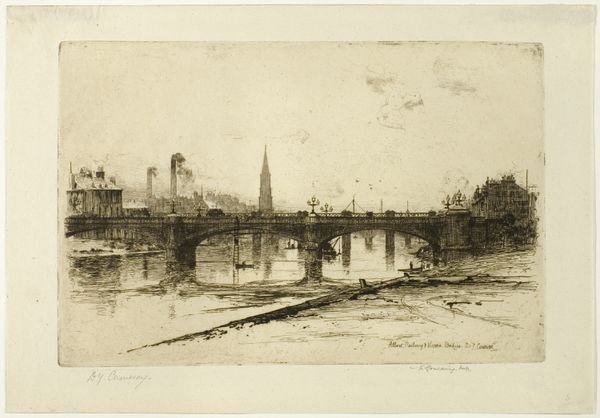
Le pont de la Tournelle en démolition (Demolition of the Tournelle Bridge) 1920
0:00
0:00
print, etching
#
ink drawing
# print
#
etching
#
landscape
#
line
#
cityscape
#
modernism
Dimensions: plate: 14.92 × 40.32 cm (5 7/8 × 15 7/8 in.) sheet: 32.7 × 49.69 cm (12 7/8 × 19 9/16 in.)
Copyright: National Gallery of Art: CC0 1.0
Curator: Ah, look at this etching. "Le pont de la Tournelle en démolition," or "Demolition of the Tournelle Bridge," by Antonio Carbonati, dating from 1920. Editor: It has a kind of… bittersweet elegance. All those delicate lines depicting something so heavy, so industrial, like watching a tear fall during a power lunch. Curator: I think that feeling really hits on a critical tension inherent to post-war art: the desire to rebuild after devastation but the undeniable presence of that devastation. What's being torn down is as much a part of the story as whatever might rise in its place. The bridge as metaphor, as concrete reality... Editor: And it's not just any bridge, it’s in Paris, where the personal and the political intertwine. I can almost hear the arguments on the banks of the Seine – the grumbling about progress and memories. Do you ever think inanimate objects hold trauma, like a haunted house? Curator: Definitely. The modernist lines suggest a break from the past but it's rendered in a medium so entrenched in tradition. Carbonati places this specific event into a much larger dialogue on social upheaval, right on the heels of immense collective trauma. How do societies move forward? Who gets left behind? Who benefits from such architectural revisions? Editor: Right! Maybe Carbonati is asking us if tearing down bridges truly unites us or if it just creates new divisions? You almost want to reach out and rescue this piece of Paris's memory as it crumbles right before you in monochrome, don't you? Curator: Absolutely. Its fragility is its power. Thanks to your reading of it, I see those tensions now perhaps more palpably than before. It acts as a beautiful artifact and serves as a critical object of study regarding progress and trauma. Editor: Totally! The joy of feeling like a detective digging through our collective consciousness… there is something really beautiful about the idea that the destruction of even just this bridge could inspire and fuel thought and insight across time.
Comments
No comments
Be the first to comment and join the conversation on the ultimate creative platform.
